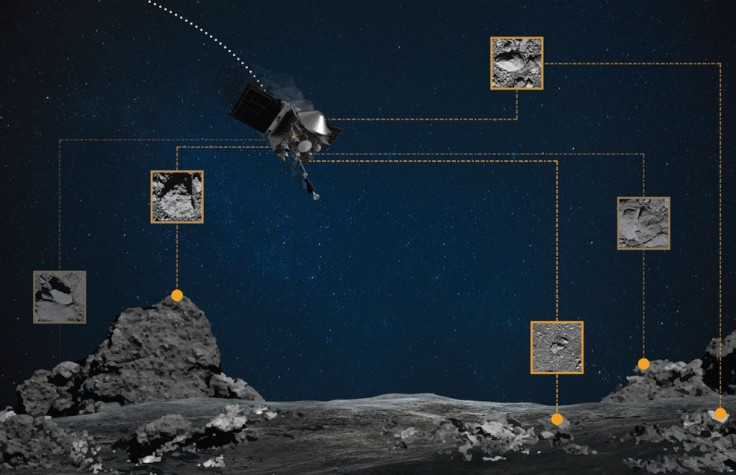NASA Spacecraft Preparing To Dodge Building-Sized Boulders To Collect Asteroid Samples

KEY POINTS
- NASA will collect samples on asteroid Bennu using the OSIRIS-REx spacecraft
- The surface of asteroid Bennu has boulders as big as buildings
- OSIRIS-REx will use a different navigation system to reach its target sites on Bennu
NASA is currently preparing to use its robotic spacecraft to collect samples from the massive potentially hazardous asteroid Bennu. But, before the spacecraft can complete its objective, it will first have to navigate through the asteroid’s harsh surface.
In 2016, NASA launched the OSIRIS-REx spacecraft to visit and study asteroid Bennu. After reaching the asteroid in 2018, the spacecraft immediately scanned it for possible target sites where it can collect samples.
Although the spacecraft has already selected two potential target sites for sample-collection, reaching them is a bit challenging. According to NASA, in order to get through the target sites, OSIRIS-REx will have to cross vast regions filled with towering boulders that are as big as buildings.
Accidentally bumping into one of these obstacles could severely damage the spacecraft and end NASA’s mission. As a result, the agency decided to come up with a new way to navigate across the 490-meter-wide asteroid.
Originally, NASA planned to use OSIRIS-REx’s LIDAR system for navigation. This system works like radar, but instead of relying on radio waves, LIDAR uses lasers pulses to measure the distances of objects. Although LIDAR is an effective system, NASA needed a new method that can provide extensive navigation capabilities.
This led the agency to the Natural Feature Tracking (NFT), an optical navigation technique that relies on high-resolution images to create a map of the spacecraft’s surroundings. Through NFT, NASA was able to turn Bennu’s building-sized boulders into signposts that will serve as beacons in OSIRIS-REx’s map across the asteroid, the agency explained.
With the help of its new navigation system, the spacecraft will be able to reach its two possible target sites, which have been named Nightingale and Osprey. According to NASA, the spacecraft’s first-sample attempt will be carried out in August this year.
If everything goes well for the agency, OSIRIS-REx will complete its mission and leave the asteroid in 2021. The spacecraft is expected to return to Earth with its samples in September 2023.
© Copyright IBTimes 2024. All rights reserved.





















